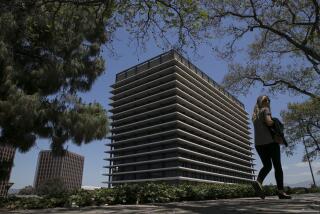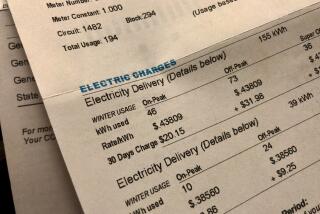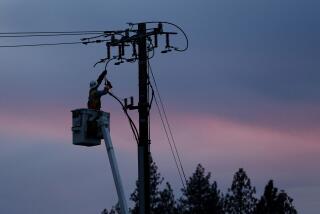Focus: Can California really hit a 100% renewable energy target?
California takes pride in its clean energy credentials, but the state may be poised to take an even more dramatic next step: deriving 100 percent of its electrical power from renewable energy sources by the end of 2045.
“I don’t think it’s a big stretch, politically,” said Senate President pro tem Kevin de León (D-Los Angeles), who introduced a bill in Sacramento that would lay down the zero-carbon sources threshold.
The legislation, Senate Bill 100, passed the California state Senate on May 31 on a party-line 25-13 vote and now moves to the Assembly. With the state Legislature in Sacramento dominated by Democrats and two and a half months still remaining in this year’s session, the chances of Senate Bill 100 moving onto Gov. Jerry Brown’s desk look promising.
Through the state’s Renewables Portfolio Standard (RPS), California already has a standard calling for 50 percent clean energy by 2030. According to recent estimates by the California Energy Commission, the state now obtains about 27 percent of its electricity from renewables.
Can California, home to the world’s sixth-largest economy, essentially de-carbonize its entire electric grid in the space of 28 years? Is it technically feasible? And can it be done without sending ratepayers’ bills through the roof?
That seems to depend on who’s answering the question.
“I’m confident (Senate Bill 100) will get passed,” de León said while talking to reporters at a wind energy conference in Anaheim recently.
In 2015, De León introduced a bill that became law, establishing the current 50 percent reduction target.
“The one thing I realize a year or two later is, I made a mistake. I should have shot higher with the RPS,” de León said. “It is very clear to me that the investor-owned utilities are working really hard and they’re meeting the goals and they’re probably going to hit 50 percent RPS in the early 2020s without breaking a sweat.”
SB100 doesn’t just set a 100-percent marker; it would also accelerate and expand existing California clean-energy targets.
Instead of reaching 50 percent by 2030, SB100 speeds up the deadline by four years, to 2026. It also directs the state to reach 60 percent renewables by 2030. And SB100 would also require state agencies such as the Air Resources Board to use the 100 percent target in their long-term planning and decision-making.
SB100 sets a target for 100 percent renewable energy but does not mandate achievement of that goal. When asked about that, de León said, “Yeah, but we always hit our goals. It doesn’t make a difference.”
Others are much more skeptical.
“Do you wear a seat belt when you drive a car?” asked Gary Ackerman, executive director of the Western Power Trading Forum, an organization based in Sacramento whose 90 members in the West buy and sell power. “There’s no problem as long as there is no accident …. And that’s the risk California is driving toward at a very fast clip. I think it’s reckless.”
While the share of renewable energy sources is growing, the state’s largest source of electricity, by far, is natural gas, which makes up 44 percent of California’s power mix, according to 2015 figures from the California Energy Commission.
Natural gas burns twice as clean as coal but is nonetheless a fossil fuel.
By doubling the state’s clean-energy requirements from 50 percent to 100 percent, Ackerman worries, “You’ll chase out all the gas-fired generators that are required to keep the grid secure and available and reliable … and when you do that, you’re taking more and more risk.”
But supporters of the 100 percent renewables effort may have received support from an unlikely source three weeks ago.
At an energy conference sponsored by the UC San Diego’s Institute of the Americas, an executive from Sempra Energy expressed confidence that the transition from traditional energy sources to renewables may not be so difficult after all.
“If you were to ask me three years ago, as a power engineer, can we actually achieve a high percentage of renewable, my answer would probably be no, we’re going to need some base-load generation,” said Patrick Lee. “But today my answer is, the technology has been resolved. How fast do you want to get to 100 percent? That can be done today.”
Considering that Sempra is a major player in the natural gas industry, Lee’s comments generated buzz among conference attendees.
But two days later, Lee took to Twitter to say that his remarks were “incomplete” and he did not mean to say reaching the 100 percent mark can be achieved immediately. “Today a reliable grid in (California) requires natural gas-fired generation,” he tweeted.
Lee is president of a new Sempra subsidiary called PXiSE Energy Solutions that is developing software technology for large-scale renewable projects.
In an email to the Union-Tribune, Doug Kline, director of corporate communications at Sempra, said Lee’s comments “were aspirational in nature” and going to 100 percent renewable energy right now is “not practical nor realistic.”
Natural gas “is the backbone of energy production when the sun is not shining and the wind is not blowing,” Kline said. “This is not an ‘either/or’ equation: We need a mix of energy resources to maintain and ensure a reliable energy grid.”
One of the members of the board of governors at the California Independent System Operator (CAISO), which oversees the operation of about 80 percent of the state’s electric power system and electricity market, said SB100’s goals can be achieved.
“It can be done and it is certainly a way to go forward,” said Angelina Galiteva, who is also the founder of Renewables 100 Policy Institute, a think tank in Santa Monica that promotes renewable energy.
On March 11, CAISO reported a first — utility-scale solar generation in its territory accounted for almost 40 percent of net grid power produced during the hours of 11 a.m. to 2 p.m.
“We’re learning a lot and we’re perfectly comfortable operating a high-penetration renewables grid,” Galiteva said.
At the same time, Galiteva acknowledged the challenges that come with integrating a large amount of renewable sources into the grid.
System operators have to balance supply and demand instantaneously, generating every kilowatt that is demanded by customers who expect their lighting, heating and air conditioning to come on the moment they flip a switch.
Solar and wind have problems with what’s called “intermittency” — that is, generating solar power when the sun isn’t shining and wind energy when the wind isn’t blowing.
The power system relies on energy sources like natural gas to fill in the gaps, ramping up and down over the course of the day and night to meet sharp changes in electricity net demand.
“As more solar is added, the ramping gets steeper and more challenging to manage but we’re going to be able to figure out ways to manage those ramps,” said Galiteva.
Energy storage systems are seen as likely solutions. Earlier this year, San Diego Gas & Electric unveiled the world’s largest lithium-ion battery energy storage center — a 30-megawatt plant in Escondido.
Energy storage is relatively expensive but its supporters expect costs to come down as the technology improves, especially by the time 2045 comes around.
Robert Michaels, an economics professor at Cal State Fullerton, is not as confident and predicts SB100 will lead to higher bills for ratepayers.
“It’s going to be expensive,” Michaels said. “We already know there are a lot of problems with reliability, just with the percentage of intermittent renewables that you have here (in California). And until, and probably not even after, we get a lot more in the way of usable battery storage or some way of storing this stuff, it’s simply not going to be feasible.”
De León said a 100 percent renewable requirement will lead to lower bills, remove more greenhouse gas emissions “so our children can breathe clean air” and create more jobs in the green economy.
According to the U.S. Energy Information Administration, Californians pay an average retail price of 15.42 cents per kilowatt hour. That’s fourth-highest in the continental U.S.
But de León was quick to point out that the average monthly bill in California is almost $20 a month lower than the national average, largely due to the state’s energy efficiency measures.
“The goal and the vision is the right thing for California, especially with the current (Trump) administration,” in the White House, de León said.
One of the Republicans who voted against SB100, state Sen. John Moorlach, R-Costa Mesa, compared the bill to the public pension crisis.
Politicians can promise “an amazing pension system formula and (they will) be gone, long gone, before the birds come home to roost,” he said. “Anything with a long timeline, you can thump your chest now but you won’t be accountable 30 years from now.”
Ackerman said the over-generation of renewable sources such as solar in California, together with the power already online from gas-fired generators, leads to a reduction in wholesale energy prices.
“You know who sees that benefit?” Ackerman said. “The people in the neighboring states because they’re buying that excess power at a significant discount. People in neighboring states are just backing down their generators and buying (the power) at a discount … It’s like a wealth transfer with Arizona, Nevada, Oregon and other states in the West.”
Boosting California’s renewable requirements is not new.
The state’s first iteration of the RPS in 2002, called for 20 percent of its power to come from clean energy sources by 2017. The target was then accelerated and the percentage later expanded to more than 30 percent before reaching its 50 percent level in 2015.
“There was skepticism with the 20 percent (requirement), then at 30 percent,” said Galiteva. “We’ve seen this before.” The continued growth in renewables makes her think getting to 100 percent is within reach.
“We also need to be focusing on other sectors too,” Galiteva said. “De-carbonizing the electricity sector without de-carbonizing the transportation sector and the building sector only gets us part of the way … I mean, we didn’t say, let’s go halfway to the moon. Let’s shoot for the whole way.”
Ackerman has his doubts.
“I’m not saying it’s impossible but it could be very costly, too,” Ackerman said. “I don’t see a price tag attached to this proposal.”
A bill analysis by the Senate Committee on Energy, Utilities and Communications acknowledged that “achievement and progress towards RPS goals have come at a cost,” pointing to increased electricity rates plus the challenges of integrating large amounts of renewables into the energy system.
Another legislative study, done by the Senate Appropriations Committee, said implementing SB100 would cost the California Public Utilities Commission about $2 million a year and the Air Resources Board $362,000.
It also said the costs for the California Energy Commission to accelerate the existing RPS are “unknown (and) potentially significant.”
Business
(619) 293-1251 Twitter: @robnikolewski
ALSO
Solar power faces growing pains
SDG&E closes in on energy storage goals
Residential solar in San Diego keeps rising
More to Read
Inside the business of entertainment
The Wide Shot brings you news, analysis and insights on everything from streaming wars to production — and what it all means for the future.
You may occasionally receive promotional content from the Los Angeles Times.











